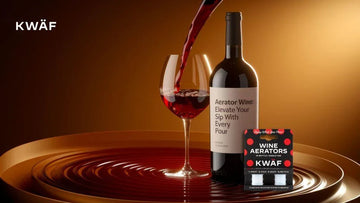Have you ever wondered how that delicious glass of wine you're sipping on came to be? It's a fascinating journey, a beautiful alchemy that transforms humble grapes into a beverage cherished by cultures worldwide. Buckle up because we're about to delve into the captivating world of Winemaking!
Winemaking: From Grape to Glass
At its core, Winemaking is the art and science of converting grapes into wine. It's a meticulous process with a rich history steeped in tradition and innovation. While the specifics may vary depending on the grape variety, region, and desired style, the general steps remain remarkably similar. Let's embark on this delightful odyssey, exploring each stage from grape to glass.
1. Viticulture: Cultivating the Perfect Grape
The story of wine begins even before the grapes are harvested. It all starts with viticulture, the art and science of growing grapes. Viticulturists, the skilled individuals behind this practice, meticulously care for the vines throughout the year, ensuring optimal grape quality. This involves pruning, canopy management, irrigation, and pest control. Climatic conditions also play a crucial role. Varietals thrive in specific climates, and winemakers rely on viticulturists to cultivate grapes that best express the essence of a particular region.

2. Harvest: Picking the Ripest Grapes
When the grapes reach peak ripeness, the magic truly begins. The harvest, a time of immense activity in vineyards, typically occurs in the fall. Winemakers meticulously assess the sugar levels, acidity, and overall health of the grapes to determine the ideal picking time. Traditionally, grapes were hand-harvested, a labor-intensive yet gentle method. Mechanical harvesting is becoming increasingly common today, especially for more extensive vineyards.
3. Crushing and Destemming: Releasing the Juice
Once harvested, the grapes make their way to the winery. Here, the journey takes a more physical turn. In the crushing stage, the grapes are gently broken open, releasing the juice (must) and separating it from the skins, seeds, and stems. This process can be done mechanically or by foot treading, a traditional method still employed in some regions for premium wines. Destemming, the act of removing the stems from the must, often occurs alongside crushing. Stems can impart bitterness to the wine, so their removal helps achieve a cleaner flavor profile.
4. Fermentation: The Birth of Wine
Now comes the stage where the must transforms into wine: fermentation. Yeast, microscopic fungi naturally present on grape skins or commercially introduced, are responsible for this critical step. Yeast consumes the grape sugars and converts them into alcohol and carbon dioxide. The type of yeast strain used, fermentation temperature, and other factors significantly impact the final wine's character. Red wines typically undergo fermentation with the skins present, allowing for color and tannin extraction. White wines, on the other hand, are fermented solely with the juice, resulting in lighter-bodied styles.
5. Pressing (Red Wine): Extracting Colour and Tannin
For red wines, pressing is a crucial step after fermentation. The remaining grape skins, seeds, and stems are pressed to extract additional color, tannins, and flavor compounds. The length of time the skins stay in contact with the juice significantly influences the final product. Lighter-bodied reds see shorter pressing times, while full-bodied styles benefit from extended skin contact.
6. Malolactic Fermentation (Optional)
Malolactic fermentation (MLF) is an optional step that can add complexity and texture to wines. During MLF, specific bacteria convert the wine's sharper-tasting malic acid to softer lactic acid. This process can occur naturally or be induced by the winemaker. Wines that undergo MLF often exhibit a creamier mouthfeel and subtle buttery notes.
7. Clarification and Filtration: Polishing the Wine
After fermentation, the wine is still quite cloudy due to suspended yeast cells and grape particles. Clarification and filtration techniques are employed to achieve a precise and stable product. Clarification can involve natural settling, the addition of fining agents, or both. Filtration removes any remaining particles, preparing a polished wine for the next stage.

8. Aging: Refining the Wine's Character
Wine can be bottled young and enjoyed right away, or it can be aged for extended periods. Aging allows the wine to soften, develop more complex flavors, and achieve a smoother mouthfeel. Depending on the desired style, winemakers may age wines in stainless steel tanks, neutral oak barrels, or both. Oak barrels impart unique flavor characteristics like vanilla, toast, and spice to the wine, adding another layer of complexity.
9. Bottling and Labeling: The Final Touches
Once the wine has reached its peak or is ready for immediate enjoyment, it's time for bottling. The bottling process involves filling sanitized bottles with the wine, adding a cork or screwcap closure, and securing it with a capsule. Winemakers may also add a back label detailing information like the grape variety, vintage year, alcohol content, and producer.
10. Enjoying the Fruits (or Grapes) of Your Labor
The final chapter of the winemaking journey belongs to you, the wine enthusiast. With every sip, you're experiencing the culmination of meticulous planning, dedicated viticulture, and the transformative power of nature and science. Whether it's a celebratory toast, a casual weekend indulgence, or a moment of quiet contemplation, savor the unique character and story in every glass.
The Enchantment of Winemaking
The journey from grape to glass is a captivating testament to human ingenuity and appreciation for nature's bounty. Winemaking is a blend of art and science, tradition and innovation, all culminating in a beverage enjoyed across cultures and throughout history. As you raise a glass to your next sip, take a moment to appreciate the remarkable transformation that brought that delicious wine to your table.
Ready to elevate your wine-drinking experience? Explore our collection of innovative KWÄF Wine Aerator designed to enhance your appreciation of every bottle.








